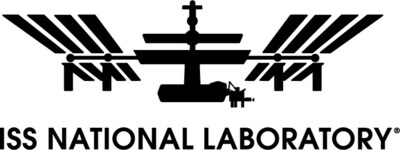|
Crew-7 Astronauts Return to Earth After Nearly 200 Days Conducting Critical Science in Space
KENNEDY SPACE CENTER, Fla. , March 12, 2024 /PRNewswire/ -- Four astronauts splashed down off the coast of Florida early Tuesday morning, ending a six-month science expedition onboard the International Space Station (ISS) as part of SpaceX's 7th rotational crewed mission under NASA's Commercial Crew Program. During their time in space, NASA's SpaceX Crew-7 astronauts engaged in dozens of research investigations and technology demonstration projects sponsored by the ISS National Laboratory® that aim to bring value to humanity and enable a robust market in low Earth orbit.

NASA astronaut Jasmin Moghbeli, European Space Agency astronaut Andreas Mogensen, Japan Aerospace Exploration Agency (JAXA) astronaut Satoshi Furukawa, and Roscosmos cosmonaut Konstantin Borisov undocked from the space station Monday, March 11, and splashed down off the Florida coast the morning of Tuesday, March 12. Their work during Expeditions 69 and 70 covered a wide range of disciplines—from life and physical sciences to advanced materials, technology development, in-space production applications, and more.
Below highlights a few of the investigations supported during this six-month mission:
- The Crew-7 astronauts supported an investigation from the University of California, San Francisco that aimed to understand how microgravity-induced age-like changes in our immune cells could affect liver regeneration. Results from this project, funded by the U.S. National Science Foundation, could help boost our understanding of aging and its effects on disease mechanisms.
- The crew also supported work from biotechnology startup LambdaVision to study whether a powdered form of the protein bacteriorhodopsin can be dissolved in solution in microgravity for the successful layer-by-layer manufacturing of artificial retinas. If successful, the powdered protein could help significantly reduce the mass of materials traveling to the space station, allowing more manufacturing at a lower cost.
- As an ever-evolving research platform, the space station is an ideal test bed for projects that seek to validate new technology and capabilities for space-based research. The crew helped to successfully install Hewlett Packard Enterprise's (HPE) Spaceborne Computer-2, a commercial off-the-shelf supercomputer based on HPE EdgeLine and ProLiant servers. HPE Spaceborne Computer-2 is equipped with software that enables performance in the harsh environment of space. This technology could streamline space-based research by providing quicker in-orbit data processing. Insight gained could also enable high-performance computing on future long-duration missions.
- Another technology demonstration the crew supported was Redwire Corporation's Pharmaceutical In-space Laboratory, a platform to crystallize small organic molecules in microgravity. Redwire aims to validate the system's capabilities by performing multiple protein crystal growth experiments. In the absence of gravity, crystals can grow larger and more uniformly, which could lead to improved therapeutics for patients. Once fully operational, this facility will be available to the life science community for future investigations.
- The crew also continued work on a Boeing-sponsored investigation to test the effectiveness and durability of an innovative antimicrobial coating in space. Samples of a special polymer coating designed to fight the spread of bacteria and viruses were placed in different locations around the space station, and crew members were instructed to touch the samples periodically. This project will help researchers evaluate the polymer's effectiveness at protecting against the spread of harmful microbes.
- The crew supported a variety of projects focused on in-space production applications. One such project from Flawless Photonics aims to improve optical fiber production in space by validating the company's technology for manufacturing high-value glass materials, like ZBLAN, in microgravity. Preliminary results indicate promising improvements in the quantity of optical fiber produced, and the kilometers of glass fiber drawn in space will be returned to Earth for independent analysis in the coming months. Results from this investigation may help reduce gravity-induced defects in optical glass products and further in-space manufacturing models.
- One of the last projects supported by the Crew-7 astronauts was an investigation that launched earlier this month on NASA's SpaceX Crew-8 mission. This project from Emory University examined how microgravity affects the growth and function of heart muscle cells as they mature into tissue-like structures. Findings will help advance heart disease modeling and could lead to the development of new therapies for patients on Earth.
To learn more about the research and technology development sponsored by the ISS National Lab, including how to propose concepts for future space-based research, visit our website.
To download a high-resolution photo for this release, click here.
About the International Space Station (ISS) National Laboratory:
The International Space Station (ISS) is a one-of-a-kind laboratory that enables research and technology development not possible on Earth. As a public service enterprise, the ISS National Laboratory® allows researchers to leverage this multiuser facility to improve quality of life on Earth, mature space-based business models, advance science literacy in the future workforce, and expand a sustainable and scalable market in low Earth orbit. Through this orbiting national laboratory, research resources on the ISS are available to support non-NASA science, technology, and education initiatives from U.S. government agencies, academic institutions, and the private sector. The Center for the Advancement of Science in Space™ (CASIS™) manages the ISS National Lab, under Cooperative Agreement with NASA, facilitating access to its permanent microgravity research environment, a powerful vantage point in low Earth orbit, and the extreme and varied conditions of space. To learn more about the ISS National Lab, visit our website.
As a 501(c)(3) nonprofit organization, CASIS accepts corporate and individual donations to help advance science in space for the benefit of humanity. For more information, visit our donations page.
| International Space Station (ISS) National Laboratory
|
| Managed by the Center for the Advancement of Science in Space, Inc. (CASIS)
|
| 6905 N. Wickham Rd., Suite 500, Melbourne, FL 32940 • 321.253.5101 • www.ISSNationalLab.org
|
 View original content to download multimedia:https://www.prnewswire.com/news-releases/crew-7-astronauts-return-to-earth-after-nearly-200-days-conducting-critical-science-in-space-302087222.html View original content to download multimedia:https://www.prnewswire.com/news-releases/crew-7-astronauts-return-to-earth-after-nearly-200-days-conducting-critical-science-in-space-302087222.html
SOURCE International Space Station National Lab

[ Back To TMCnet.com's Homepage ]
|


